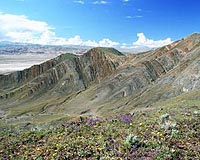| . |  |
. |
Brussels (UPI) Jul 15, 2009 The EU environment commissioner warned action is needed to save species and habitat types the have been placed under EU legal protection. Environment Commissioner Stavros Dimas, in a release issued Monday, said the overall tenor of the report on conservation status indicates habitats and species "have not achieved good conservation status." He added, however, protection steps are having some positive impact. The report, which covers data provided for the 2001-06 period, is required to be delivered to the European Council and European Parliament under Article 17 of the Habitats Directive. Covering 216 types of habitats and 1,182 species, it is considered the most comprehensive survey of EU biodiversity. "Only a small proportion of these vulnerable habitats and species have achieved good conservation status and member states will need to strengthen their efforts if this situation is to improve," a release on the report said. Changes in methods of agriculture, tourist development and climate change have left grasslands, wetlands and coastal habitats under the greatest threat. The report said just 7 percent of habitat types associated with agriculture were assessed as "favorable," compared with a 21 percent "favorable" assessment for non-agricultural habitats. "This is due to shifts toward more intensive agriculture, abandonment of the land and poor land management. Wetlands are being converted to other uses and are also suffering the effects of climate change, as are habitats associated with mountain glaciers. Coastal habitats are under increasing pressure from tourism," the report said. Dimas said the report "leaves no room for complacency" in regards to stopping the loss of biodiversity. He said, however, the data along with EU nature legislation would allow for the expectation of "significant improvement" over the next 20 years. "Europe's biodiversity is still under serious pressure and faces grave risks," said University College London Professor Jacqueline McGlade, executive director of the European Environment Agency. "Although we will miss the target of halting the biodiversity loss in Europe by 2010, some progress is being made. "As the commissioner said recently in Athens, the post-2010 target should be ambitious, measurable and clear. It should maintain the emphasis given to the intrinsic value of biodiversity while also recognizing the value of healthy and resilient ecosystems and the services they provide." The Environment Commission's report said some habitat types and species are starting to recover. Species such as the brown bear, the wolf and the beaver have been determined to have re-established in many areas. "This means that the right habitats are available and that negative pressures such as hunting and pollution have been reduced," the report stated. The Habitats Directive requires EU members to maintain a number of designated habitat types and species at favorable status at selected sites agreed with the European Commission. Together with sites from the Birds Directive, these sites become part of Natura 2000, the biggest ecological network in the world. Nearly 22,000 sites, covering 13.3 percent of EU territory, are designated under the Habitats Directive. Share This Article With Planet Earth
Related Links Darwin Today At TerraDaily.com
 Explosive Growth Of Life On Earth Fueled By Early Greening Of Planet
Explosive Growth Of Life On Earth Fueled By Early Greening Of PlanetTempe AZ (SPX) Jul 14, 2009 Earth's 4.5-billion-year history is filled with several turning points when temperatures changed dramatically, asteroids bombarded the planet and life forms came and disappeared. But one of the biggest moments in Earth's lifetime is the Cambrian explosion of life, roughly 540 million years ago, when complex, multi-cellular life burst out all over the planet. While scientists can pinpoint ... read more |
|
| The content herein, unless otherwise known to be public domain, are Copyright 1995-2009 - SpaceDaily. AFP and UPI Wire Stories are copyright Agence France-Presse and United Press International. ESA Portal Reports are copyright European Space Agency. All NASA sourced material is public domain. Additional copyrights may apply in whole or part to other bona fide parties. Advertising does not imply endorsement,agreement or approval of any opinions, statements or information provided by SpaceDaily on any Web page published or hosted by SpaceDaily. Privacy Statement |